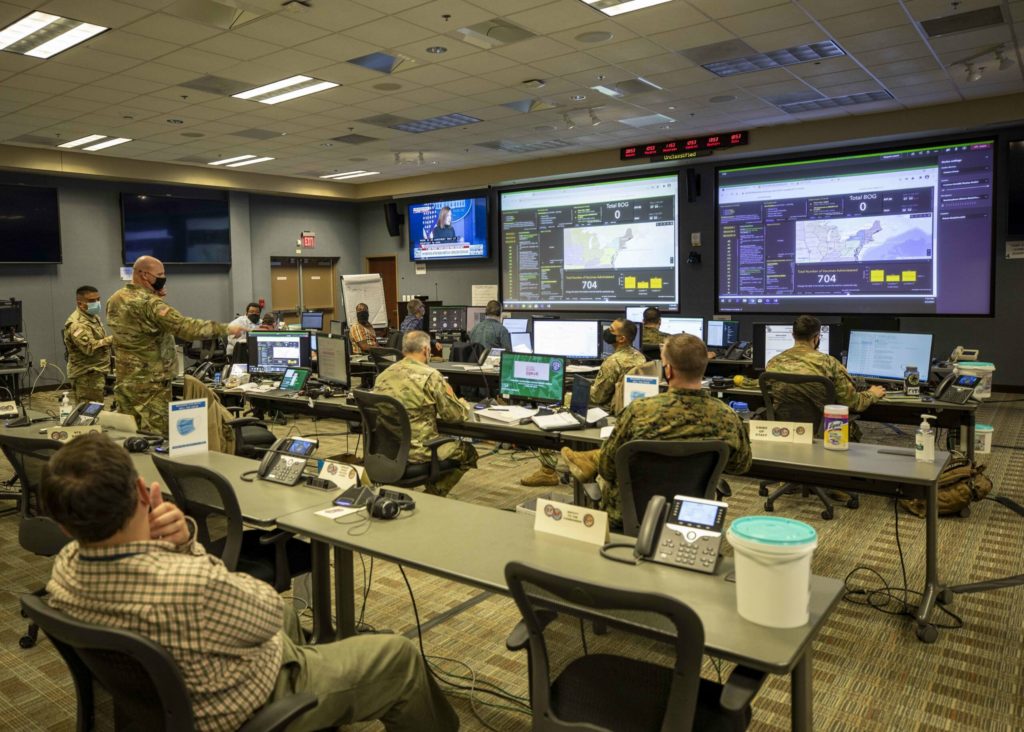[ad_1]
Anduril, Aalyria, Atlas Space and Enveil won contracts for the Defense Innovation Unit’s hybrid space architecture program
WASHINGTON — The Defense Innovation Unit awarded contracts to Anduril, Aalyria Technologies, Atlas Space Operations and Enveil for a project that seeks to demonstrate a hybrid architecture where commercial, civil and military satellites can share data.
DIU, based in Silicon Valley, was created to tap technologies from the commercial market for military applications. Its hybrid space architecture project is being done in collaboration with the Space Force and the Air Force Research Laboratory.
Atlas Space last month announced its DIU award. The agency said more contracts are expected from the same solicitation.
“Hybrid space communications is the next great leap forward,” DIU said in a news release July 7.
Rogan Shimmin, DIU program manager, said the initial goals are to demonstrate on-demand collection and analysis of imagery and other tactical data collected by commercial and government satellites operating in different orbits.
On-orbit demonstrations are planned within 24 months, said DIU. The project will focus on four main areas:
A secure software defined network to integrate diverse telecom systems across low, medium and geostationary orbits, and cislunar space. There is currently limited communication between systems across orbits.
Combining data from multiple sources will require common data standards and interfaces, and common command and control interfaces to manage data collection will be necessary.
Cloud-based analytics using artificial intelligence and machine learning
A variable trust protocol to protect information. According to DIU, “we must ensure that we do not introduce vulnerabilities through the increased access points. Due to the broad variety of participating networks, each link and each node will be dynamically assigned a trust score based on observed behavior within the architecture. The traffic can then be routed over preferred links based on sensitivity and timeliness.
Speaking last month at a National Security Space Association event, Steve “Bucky” Butow, director of DIU’s space portfolio, said the hybrid space architecture will help support a Pentagon effort to connect diverse networks known as Joint All-Domain Command and Control.
“Ultimately our goal is secure, assured multipath communications that serves the commercial, civil and national security space, not just in LEO but in all orbits, and it should be scalable,” said Butow.
With regard to cybersecurity, he said, a hybrid network needs to provide security but also ensure access. “If you’re gonna have an internet of things, and they’re all gonna be connected through the hybrid architecture, you can’t use encryption methods that typically we use with small constellations. We have to move more to a zero trust architecture.”
The project also will look at different ways to manage data transport, said Butow. “There’s lots of companies that are responsible for moving data between GEO and MEO and LEO, from space to ground and ground to space,” he said. “We want to take advantage of all that data transport architecture, and to make sure that we have both the least expensive but also the most responsive ways to move critical information to users who need it.”
The hybrid space architecture will be designed to support commercial industry’s revenue models, Butow said. “We want to make it easy for them to exchange their data with end users in a revenue positive model. There’s no commercial business case if there’s no revenue.”
[ad_2]
Source link
